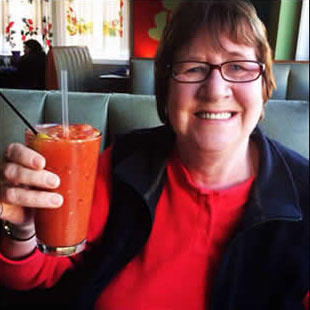
One of the joys in my life is that my dear mother can take a joke.
My mother is brilliant, effusive, hilarious, (and in a very lovely way), kinda nuts. She’s easy to make fun of, and badgering her about one of her many quirks (such as her inclination to chitchat with everyone who crosses her path) is always good fun. But Mom can also dish it back, and this sort of back-and-forth banter always makes for an amusing evening when we’re visiting. While we’re at it, the scene is usually accompanied by gin, colorful language, and laughter as we make fun of each other and (of course) others.
Frequent topics include how one should never willingly ride in a car my sister is driving, accounts of my misbehavior during high school/college/last week, or even the time Mom sprayed eyeglass cleaner in her mouth because she thought the little spray canister was a breath refresher.
I’ll also go to work on her with an annoying little game I call “That’s from St. Louis”. It’s a simple game, especially for a guy who knows thousands of useless facts about St. Louis. Here’s how it works:
During our fun chats, all I do is wait for my mother to say something that I can relate to the city of St. Louis. I’ll usually start with something trivial that everyone knows:
 In the beginning of the game, Mom will usually respond with something simple like “That’s nice, dear”. But the key is to keep it going. The more random the fact, the better:
In the beginning of the game, Mom will usually respond with something simple like “That’s nice, dear”. But the key is to keep it going. The more random the fact, the better:
 After five or six of these, it’ll start to get to her. I’ll hear a “sigh” in return, or maybe I’ll get one of her “looks”. My mother adores the city of St. Louis, but the button pushing is getting to her. This is when I go in for the kill:
After five or six of these, it’ll start to get to her. I’ll hear a “sigh” in return, or maybe I’ll get one of her “looks”. My mother adores the city of St. Louis, but the button pushing is getting to her. This is when I go in for the kill:
 (Snap)
(Snap)
 I actually have a good reason for telling the story about how I mildly torment my mother. It’s a good lead-in to this post, which is a first in the life of Distilled History. Instead of promoting something that did happen in St. Louis, I’m going to promote something that didn’t.
I actually have a good reason for telling the story about how I mildly torment my mother. It’s a good lead-in to this post, which is a first in the life of Distilled History. Instead of promoting something that did happen in St. Louis, I’m going to promote something that didn’t.
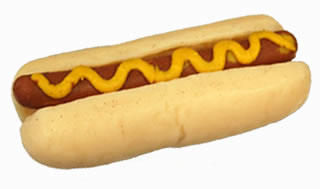
My dumb little game not only led me to learn that I had one of my facts wrong, but it also led me to the fun story behind a classic drink. It’s not exactly St. Louis history, but it’s drinking history. That’s one-half of this blog, so it’s good enough for me.
On the evening when I informed my (somewhat exasperated) mother that the gin-based Tom Collins cocktail was invented in St. Louis, I remember suddenly wondering if it was actually true. Although I’ve been told by a few reliable sources the Tom Collins was born here, I’ve fallen for more than a few myths of St. Louis before.

Others have as well, and that’s why we sometimes hear people incorrectly boast that the hamburger, the hot dog, and peanut butter were all invented at the 1904 St. Louis World’s Fair. They weren’t, and minimal research will provide evidence that the three foods were around well before 1904. But all is not lost, dear St. Louis. Our magnificent fair 110 years ago can still claim the waffle ice cream cone and cotton candy.
With a bit of research, I also learned the Tom Collins cocktail also belongs in the same “Not-from-St. Louis” category as peanut butter. It turns out the classic libation of gin, lemon juice, simple syrup, and soda was almost certainly first poured in New York City.
Many claim the drink is a St. Louis creation because of a famous bartender named Jerry Thomas, the “presiding deity” of the bar at the famous Planter’s House Hotel that once stood downtown. One of the most famous hotels west of the Mississippi in the 19th Century, it’s possible that during his tenure, Jerry Thomas served drinks to notable guests including Charles Dickens, Ulysses S. Grant, and Jefferson Davis.
The claim does have merit on the surface, because “Professor” Jerry Thomas (as he would come to be known), was in fact there. He did work as the head bartender at the Planter’s House at some point in the mid-19th Century. But it’s a flimsy claim to say he invented the Tom Collins cocktail during his tenure. Not a single shred of evidence exists to support it. In fact, there is no record of how long he was at the Planter’s House, what he did (other than tend bar), or why he eventually left.
What can’t be argued is that in the years after he left St. Louis, Jerry Thomas would become the most famous bartender in American history. This happened in part because of a benchmark book he published, The Bar-Tender’s Guide: How to Mix Drinks or The Bon Vivant’s Companion. Published in 1862, it is considered the first book of cocktail recipes ever published in the United States.
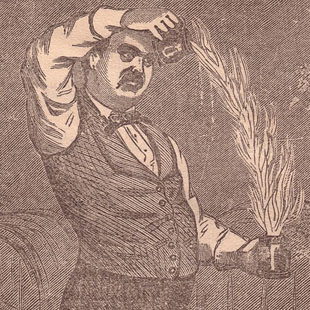
A significant clue that the Tom Collins cocktail is not a St. Louis creation is that the recipe doesn’t appear in the that book. The Collins doesn’t appear (for the first time in print) until the second edition, published fourteen years later in 1876. By that time, Jerry Thomas had been for years firmly rooted in his own bar on Broadway in New York City.
A second (and most convincing) clue is remarkably, a simple practical joke.
In 1874, some random fellow in the saloon-filled streets of New York City came up with an idea to provoke one of his drinking companions. It worked, and the success of the joke caused it to become a popular form of entertainment in the city. It didn’t stop there. As fast as news could travel, folks in Boston, Philadelphia, St. Louis, and any town that could claim a bar and a guy looking to rile up his pal became a place where the prank was rehashed. It was known as The Great Tom Collins Hoax of 1874, and it’s one of the more amusing (and well-documented) stories in the history of drinking and mixology.
An article published in the St. Louis Post-Dispatch on May 13, 1874, details how the prank worked:
 With his friend sufficiently riled up, the two men would set forth to locate Tom Collins. Entering the crowded saloon he was directed to, the joke’s pawn would angrily demand of the bartender “Where is Tom Collins?” Already in on the prank, the bartender would direct the man towards some unsuspecting patron about to deny being familiar with anyone named Tom Collins. In the resulting confusion, tempers would flair, the joke would eventually be realized, and the crowded bar (most certainly in on the act) would erupt with laughter.
With his friend sufficiently riled up, the two men would set forth to locate Tom Collins. Entering the crowded saloon he was directed to, the joke’s pawn would angrily demand of the bartender “Where is Tom Collins?” Already in on the prank, the bartender would direct the man towards some unsuspecting patron about to deny being familiar with anyone named Tom Collins. In the resulting confusion, tempers would flair, the joke would eventually be realized, and the crowded bar (most certainly in on the act) would erupt with laughter.

Of course, this sort of scene would require a round of drinks to get everyone to simmer down and heal egos.
The prank became so popular that even newspapers became participants. False sightings of the notorious “Tom Collins” were reported, advertisements promoted his preferences in hats and cigars, and articles with titles such as “That Infernal Tom Collins!” appeared frequently when the joke succeeded. People even wrote songs to memorialize the good times had with the prank.
In one humorous account, the joke caused conflict even when the victim knew what was happening. In June 1874, the St. Louis Post-Dispatch printed an account of a hotel patron who became quite angry when he was handed a card that said “Tom Collins wants to see you after dinner”. Already victimized by the joke two or three times previously, the man became “wrathful”. This led to “hard words” with the identified prankster, and a “first class scrimmage hung in the balance”. Fortunately, cooler heads prevailed.
As 1874 wound down, so did the joke. The more it was staged, the more difficult it became to find someone who’d be an unknowing patsy. But the hoax has a lasting legacy that lives on today. According to cocktail historian David Wondrich (and several other sources), it’s this joke that gave us the name of the famous Tom Collins cocktail we know today. In his book Imbibe: From Absinthe Cocktail to Whiskey Smash, a Salute in Stories and Drinks to “Professor” Jerry Thomas, Pioneer of the American Bar, Wondrich asserts that the ancestor of the Tom Collins is a gin-based punch with the similar name of “John Collins”. Popular in England, the recipe was likely transported across the Atlantic by British sailors visiting New York City. However, Americans have a tendency to put their own spin on things, and before long the “John Collins” became known as the “Tom Collins”.
And it’s delicious gin that gives us the answer why.

In 1874, the London dry version of gin (think Bombay Sapphire, for example) that many prefer today was practically unheard of. Order a gin drink in 1874 and you’d either get Dutch Jenever or British Old Tom gin. Both are sweeter and maltier versions of the London dry everyone is familiar with today. These (delicious) versions are still around today, but London dry is now the standard (due in large part to the popularity of the martini cocktail).
Anyway, when angry guys started storming into saloons in and demanding to see a “Mr. Collins”, bartenders started putting their own spin on the joke. A “Collins” was also a drink, so holding one up and bellowing back “Here’s your Mr. Collins!” became an amusing way to enhance the prank.

The final piece of the puzzle occurred when an unknown bartender or patron decided to refer to the drink as a “Tom Collins” instead of a “John Collins”. This likely made more sense at the time, because it was very probably that Old Tom gin (or just “Old Tom”) was used to make it.
Like the hoax that had spread from bar to saloon, and town to city, so did the freshly named drink. Then, two years after the joke took the country by storm, Jerry Thomas sat down to write the second edition of his popular cocktail recipe book. Surely recalling his own experiences from the hoax the Tom Collins recipe was included. It would be the first time the recipe appears in print. The rest, as they say, is drinking history.

![]()
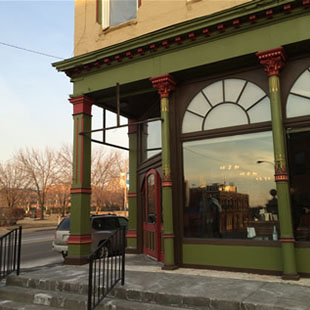
The location of the drink for this post is one I have been saving for few months. The Planter’s House, named after the famous St. Louis hotel, recently opened on the on the corner of Mississippi and Chouteau just north of Lafayette Square. Frequent readers of this blog will likely become very familiar with Planter’s House, because it’s going to be featured in this blog for years to come. The first time I walked in the door, I instantly recognized that St. Louis had been blessed with another place at which I could satisfy my cocktail fix.
I knew it would be good even before that because a guy named Ted Kilgore is one of the proprietors. I don’t know Mr. Kilgore personally, but his name carries weight among cocktail connoisseurs in this town. I’ve been telling people for years that the best Manhattan in St. Louis is the one he served when he ran the show at Taste. Now it’s at Planter’s House, and I’m giddy that it’s actually possible to order a pitcher of them from the cocktail menu.
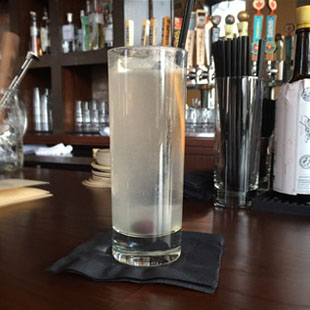
Another aspect of the (new) Planter’s House that I appreciate is the attention to St. Louis drinking history. Not only is the name of the establishment a nod to Jerry Thomas and the original Planter’s House, but the accompanying “Bullock Room” is named after a notable African-American bartender who worked in St. Louis in the early 20th Century. That’s a guy who will be getting attention in this blog sooner or later.
I’ll be back often for the Manhattans, but the purpose of my visit was to get a Tom Collins. It’s listed as one of the “House Favorites” on the Planter’s House cocktail menu, and I’ve never had a better version. My only complaint is that this brutal 2014 winter continues. Accompanied by fresh lemon juice and orange peel, I believe a Tom Collins is most enjoyable during warmer weather.
To add to my excitement, I was elated to learn that Bol’s Genever, not London dry gin, is used in the Planter’s House Tom Collins. That’s how Jerry Thomas would have prepared it.
Served in a tall Collins glass over perfectly clear ice, the drink is ideally made at Planter’s House.
Now all I have to do is get Mom, my favorite drinking buddy, back to St. Louis so I can take her to the Planter’s House for another.
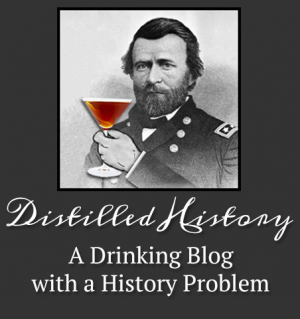
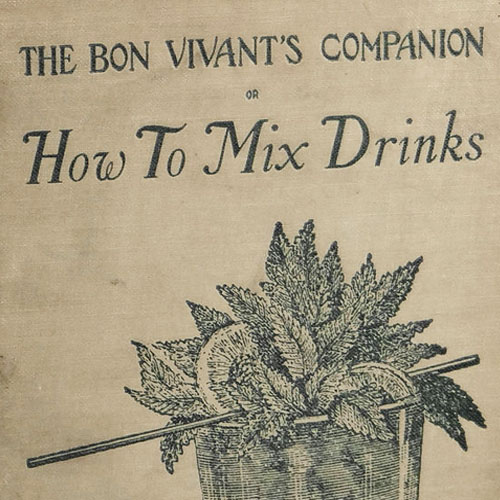
Ha – I’m a collector of useless facts as well and have to remind myself to double-check them sometimes.
Fantastic blog about the libelous Tom Collins!
Hi Cameron, thanks for the story of the origin of everything from St. Louis. I know another version of the origin of the Tom Collins. Have you ever heard of Charles Dittrich, a bartender at The Planters Hotel? St. Louis newspapers cited his name as a possible originator of the drink. I have family records, stories, and recipes that have been passed down. If you would like me to share them with you, email me.
The infamous prank is mentioned in the book by Michael Anderele “The (Alternative) History of Drinks: A Unique Tale of Alcoholic Concoctions”. The MC of the series is a cocktail enthusiast and reminded me of all the cool drinks I made for my parents as a teenaged bartender. You may enjoy the series, I don’t know. I did, and I made virgin versions of many other drinks for my own teens!